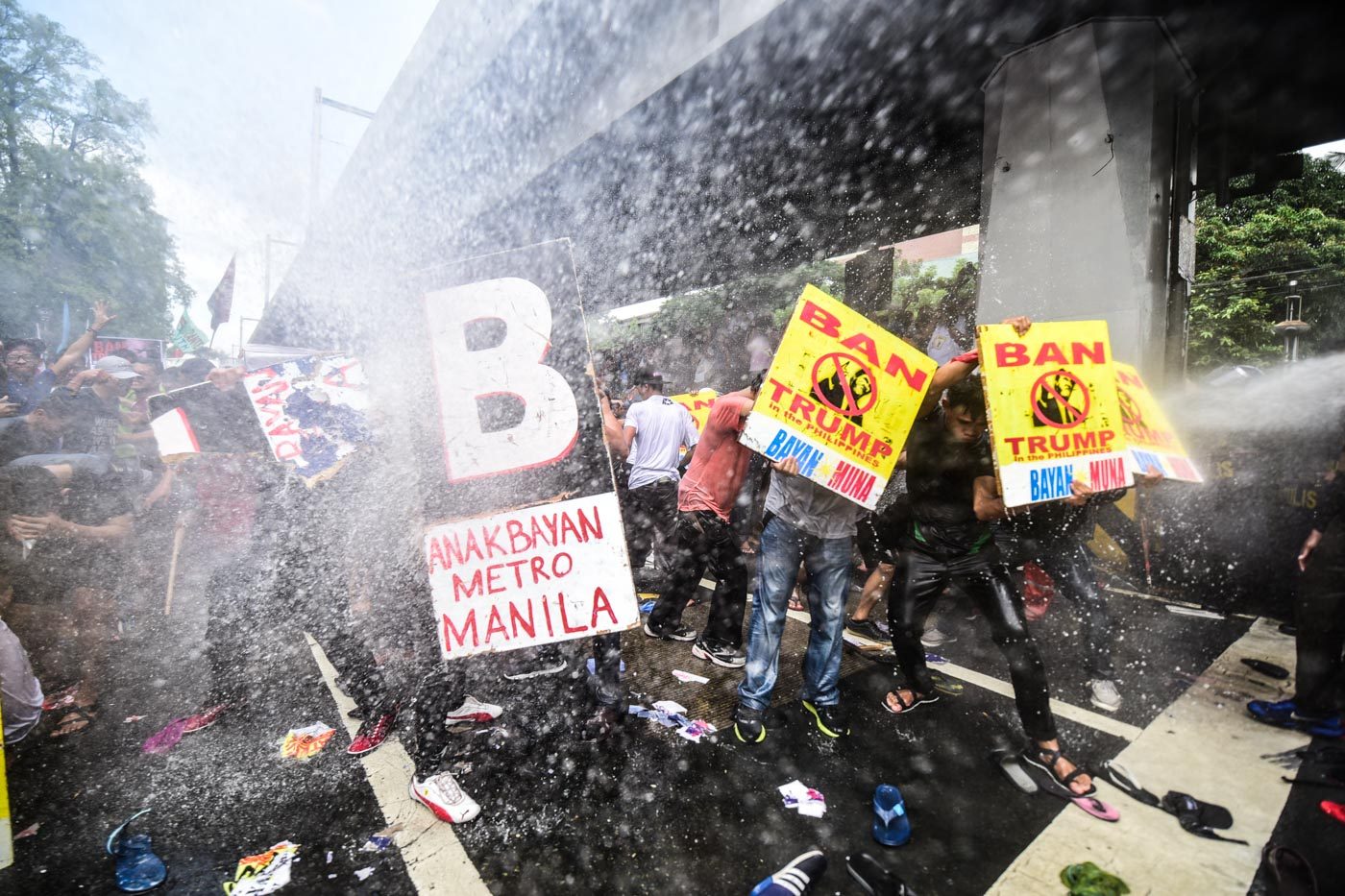SUMMARY
This is AI generated summarization, which may have errors. For context, always refer to the full article.

MANILA, Philippines – Police defended their use of a sonic weapon during a protest along Taft Avenue on Monday, November 12.
They used a long-range audio device (LRAD), a large acoustic mechanism used to project alarm-like noise for crowd control. This did not sit well with protesters, slamming its use as uncalled for.
But for Philippine National Police (PNP) chief Director General Ronald dela Rosa, they had no choice but to use it to defend themselves, as they were outnumbered.
“Alangan naman gusto nila pabayaan ko lang yung mga tropa na mangamatay dyan kapag hahatawin nila, apak-apakan nila, pwede ba yun? (Would they rather have us leave our men to die being pounded and stomped on?) So we have to defended ourselves accordingly,” Dela Rosa told reporters on Tuesday, November 14.
In an earlier interview with reporters on Tuesday, Metro Manila police chief Director Oscar Albayalde downplayed the effect of the the sonic alarm, saying that it “will only give you a temporary discomfort.”
In addition to the sonic device, cops also used water cannons to halt protesters from marching towards the Philippine International Convention Center (PICC), the main venue of the 4-day Association of Southeast Asian Nations (ASEAN) Summit.
Unable to break the police barricade at the corner of Padre Faura Street and Taft Avenue, the activists were forced to stage their protest more than 3 kilometers away from their target venue.
“For the first time, naka-experience kami na ginamitan kami ng sonic weapon na yung LRAD (long range acoustic device) nila nakasakay sa isang police vehicle. At yung matinis na matinis na sound ginamit para i-disrupt yung protesters at delikado yung ganoong klaseng tactic,” Bayan secretary general Renato Reyes said in an interview with Rappler.
(For the first time, the anti-riot police used the sonic weapon LRAD or long-range acoustic device against us. The piercing sound was used to disrupt the protest. This is a dangerous tactic.)
In a statement by Health Alliance for Democracy, it said that at least 123 protesters were injured from the violent dispersal.

“A severe case of a 24-year-old woman has been documented. She took a water cannon blast directly on her left ear, added with four head contusions as policemen hit her with their truncheons multiple times,” Health Alliance for Democracy said in its statement.
The unidentified protester was taken to the Philippine General Hospital for further treatment after she was given first-aid.
The tense standoff between riot police and protesters on Monday is just one of the many protest actions lined up throughout the ASEAN Summit.
Authorities have deployed at least 60,000 security personnel for the international meetings which brought together heads of the 10 ASEAN member-countries and their allies including the US.
While the government has allowed groups to stage protests during the ASEAN summit week, protesters were not allowed to go near the PICC. (READ: Small group of ASEAN summit protesters reach PICC gate) – With a report from Rambo Talabong/Rappler.com
Add a comment
How does this make you feel?





There are no comments yet. Add your comment to start the conversation.